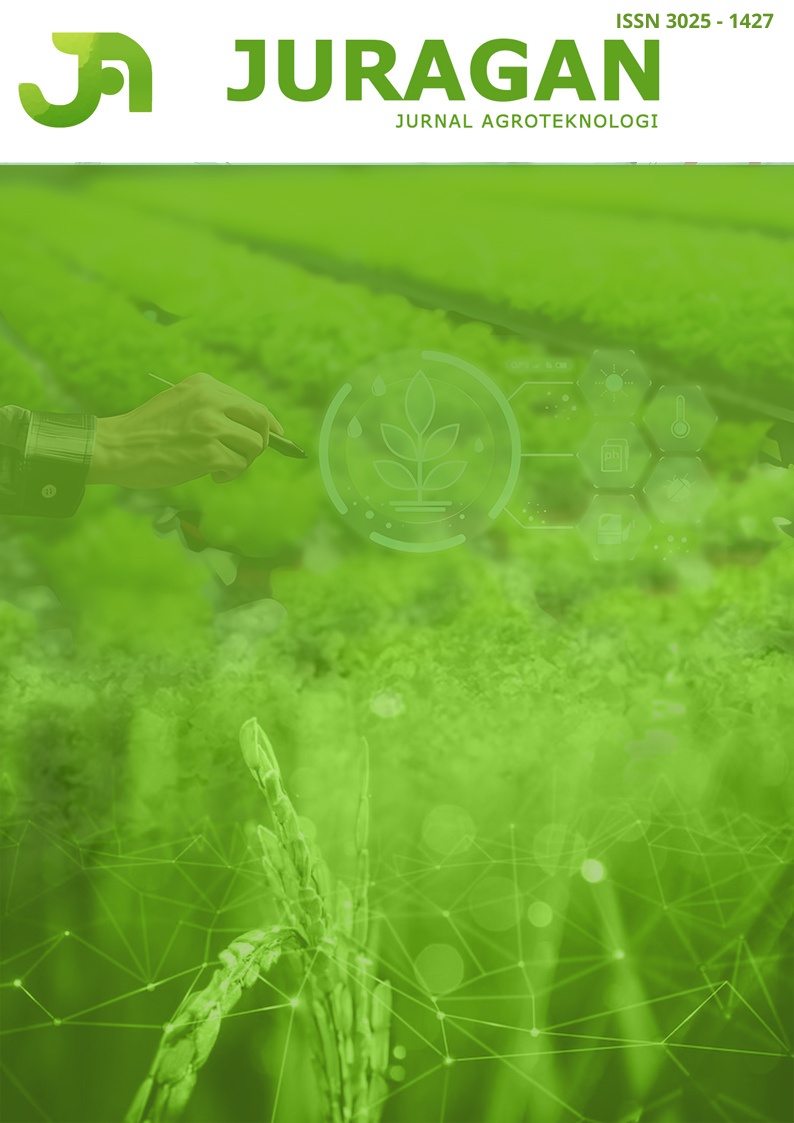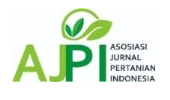Penicillin Production By Penicillium Chrysogenum L112 With Variation Of Agitation Speed In 1 L Fermentor
DOI:
https://doi.org/10.58794/juragan.v2i2.1150Abstract
Penicillin refers to a group of β-lactam antibiotics with high commercial value because it is precursor for semi synthetic antibiotics such as amoxicillin and ampicillin. It also has high antibacterial activity. Penicillin production in industrial scale uses large fermentation reactor which require optimum agitation. The present study was conducted to investigate the effect of agitation speed on penicillin production using Penicillium chrysogenum L112, which have high antibiotics activity against some bacteria. P. chrysogenum L112 which regenerated at 30°C for 7 days was suspended with distilled water. The suspension was inoculated to vegetation media to reach 2% (v/v) final concentration. It was then followed by activation at 28°C for 60 hours with 120 rpm agitation speed. The activated culture was inoculated to fermentation media to give 10% (v/v) final concentration in a 1 L fermenter at pH 7 and 28°C, aeration of 1 vvm, for 240 hours. Agitation speed was varied at 100, 150 and 200 rpm. Sample was collected every 24 hours and checked for its pH, dry cell weight, and antibiotics activity. The results of the present study indicate that agitation speed and time of incubation affected the P. chrysogenum ability to produce penicillin. The crude extract showed different effect when tested against different bacteria, which indicate different amount of penicillin produced. The best antibiotics activity was found at 150 rpm agitation speed, incubation time of 192 hours. The highest inhibition was found for Escherichia coli which showed 37 mm clear zone.
References
Birol, G, Ündey, C, Parulekar, SJ & Cinar, A 2002, 'A morphologically structured model for penicillin production', Biotechnology and Bioengineering, vol 77, no. 5, pp. 538-552.
Crueger, W & Crueger, A 1984, Biotechnology: a textbook of industrial microbiology, Sinauer Associates, Inc., Sunderland.
Deo, YM & Gaucher, GM 1984, 'Semicontinuous and continuous production of penicillin-G by Penicillium chrysogenum cells immobilized in κ-carrageenan beads', Biotechnology and Bioengineering, vol 26, pp. 285-295.
Elander, RP 2003, 'Industrial production βlactam antibiotics', Applied Microbiology and Biotechnology, vol 61, pp. 385-392
El-Sabbagh, N, McNeil, B & Harvey, LM 2006, 'Dissolved carbon dioxide effects on growth, nutrient consumption, penicillin synthesis and morphology in batch cultures of Penicillium chrysogenum', Enzyme and Microbial Technology, vol 39, pp. 185–190
El-Sayed, AMM & Rehm, HJ 1987, 'Semicontinuous penicillin production by two Penicillium chrysogenum strains immobilized in calcium alginate beads', Applied Microbiology and Biotechnology, vol 26, no. 3, pp. 211-214.
Houbraken, J, Frisvad, JC, Seifert, KA, Overy, DP & Tuthill, DM 2012, 'New penicillinproducing Penicillium species and an overview of section Chrysogena', Persoonia, vol 29, pp. 78–100.
Judoamidjojo, M, Darwis, AA & Said, EG 1992, Teknologi Fermentasi, Bumi Aksara , Jakarta.
Kardos, N & Demain, AL 2011, 'Penicillin: the medicine with the greatest impact on therapeutic outcomes', Applied Microbiology and Biotechnology, vol 92, pp. 677-687.
Koffler, H, Emerson, RL, Perlman, D & Burris, RH 1945, 'Chemical changes in submerged penicillin fermentation', Journal of Bacteriology, vol 50, no. 5, pp. 517-548.
Rani, SA, Jetty, A & Ramakrishna, SV 2003, 'Penicillin production in continuous stirred tank reactor by Penicillium chrysogenum immobilized in agar', Chemical and Biochemical Engineering Quarterly, vol 17, no. 2, pp. 119-122.
Smith, JJ & Lilly, MD 1990, 'The effect of agitation on the morphology and penicillin production of Penicillium chrysogenum', Biotechnology and Bioengineering, vol 35, pp. 1011-1023
Volk, WA & Wheeler, MF 1993, Mikrobiologi Dasar, Erlangga, Jakarta.
Weber, SS, Bovenberg, RAL & Driessen, AJM 2012, 'Biosynthetic concepts for the production of β-lactam antibiotics', Biotechnology Journal, vol 7, pp. 225–236.









